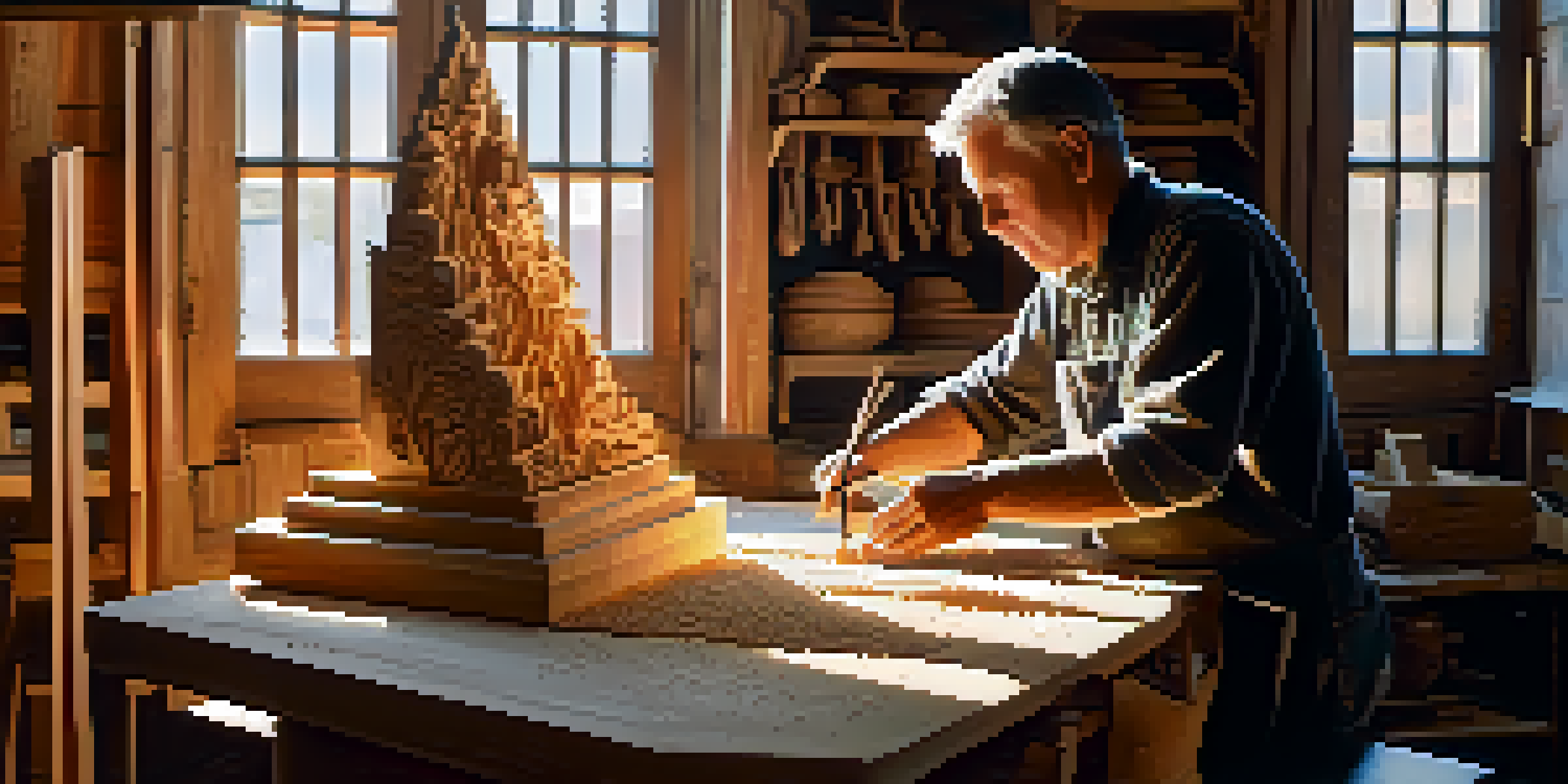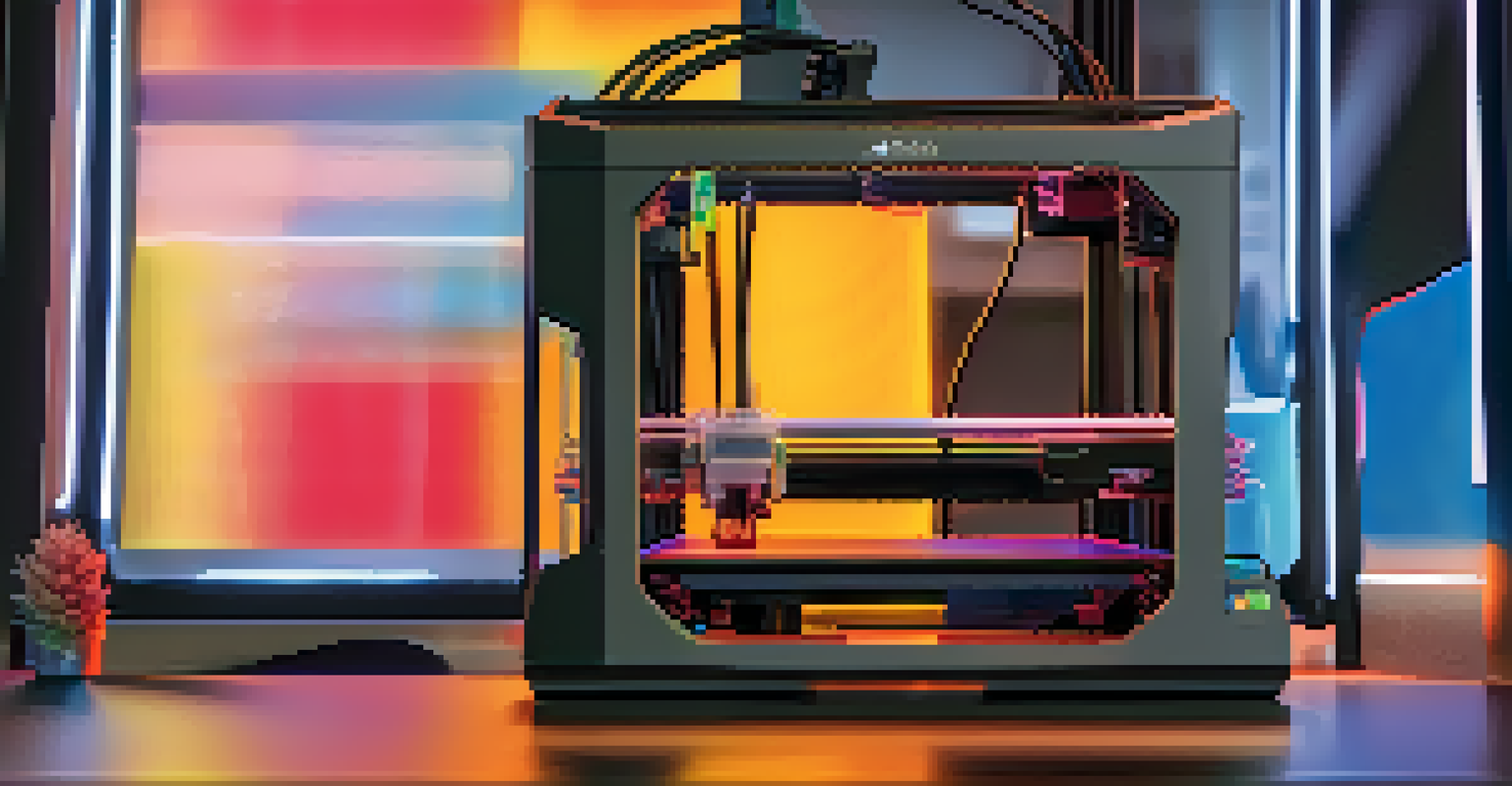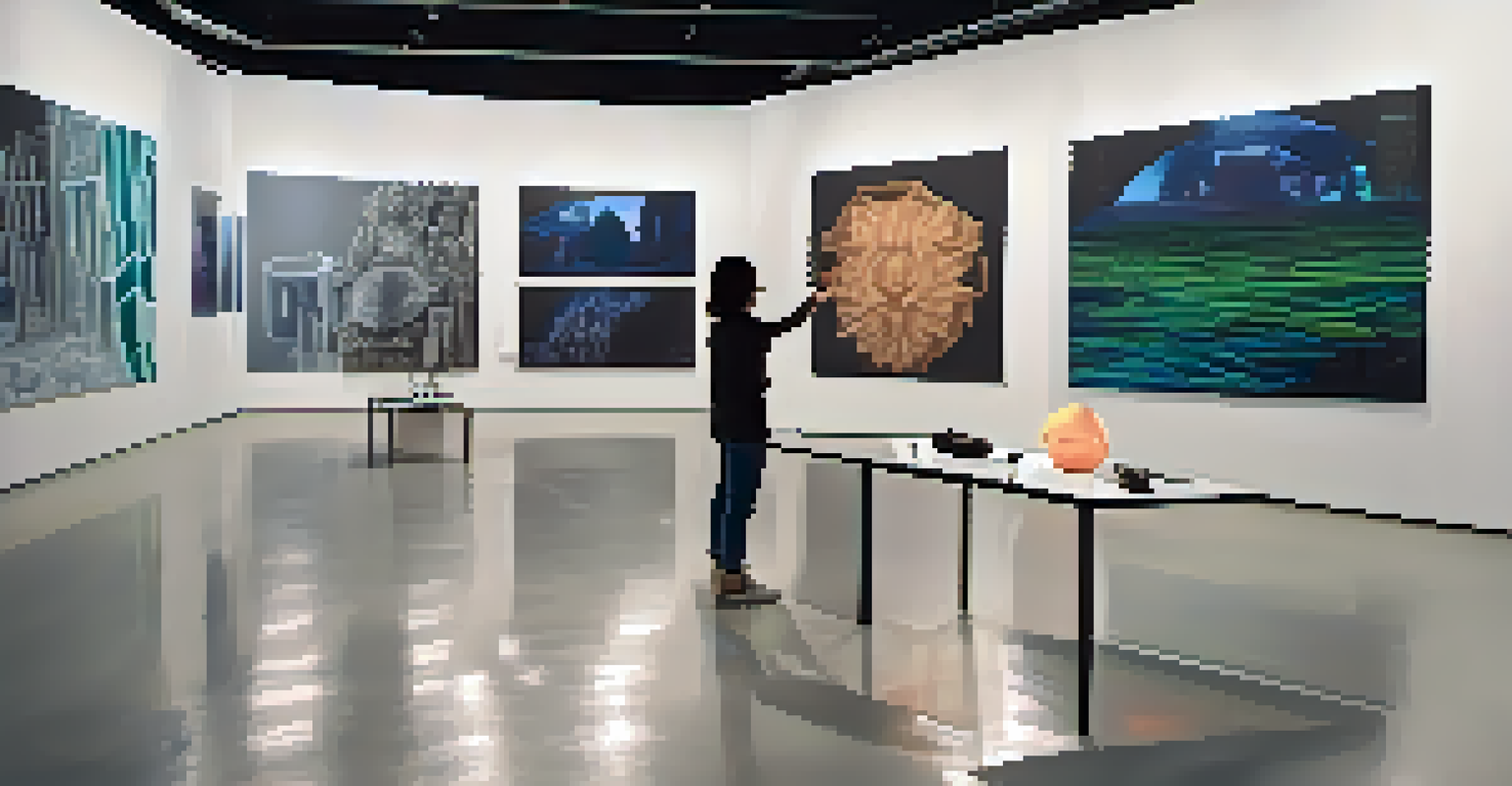How Software Development is Shaping the Future of Carving

The Intersection of Software and Traditional Carving Techniques
Carving has been an age-old craft, deeply rooted in tradition. However, the advent of software development is breathing new life into this art form. By integrating software tools, artisans can enhance their creativity and precision in ways previously unimaginable.
Creativity is allowing yourself to make mistakes. Art is knowing which ones to keep.
For instance, computer-aided design (CAD) software allows carvers to visualize their projects before making physical cuts. This not only saves time but also reduces material waste, as artists can tweak their designs digitally. Imagine being able to see your sculpture in 3D before even picking up a chisel!
Moreover, this combination of traditional skills with modern technology helps preserve the craftsmanship while pushing its boundaries. Artists can now explore intricate details and complex patterns that were once challenging to achieve manually.
Emerging Technologies: 3D Printing in Carving
3D printing is one of the most exciting advancements in the carving world. It allows artists to create prototypes or even final products with remarkable speed and precision. By using digital files, carvers can turn their software designs into tangible objects.

Imagine an artist sketching a design on their computer, sending it to a 3D printer, and watching as it layers material to create a sculpture. This process not only accelerates creation but also opens up new avenues for experimentation. Artists can test multiple designs quickly and efficiently.
Blending Tradition with Technology
The integration of software tools enhances traditional carving techniques, allowing artists to explore new creative possibilities and improve precision.
Furthermore, 3D printing can democratize the carving process, making it accessible to those who may not have traditional carving skills. It encourages a new generation of creators to explore this art form, blending creativity with technology.
Software Development: Enhancing Precision and Accuracy
Precision is key in carving, and software advancements are making it easier than ever. Tools like CNC (computer numerical control) machines rely on software to guide the carving process with remarkable accuracy. This technology allows for intricate designs that would be nearly impossible to achieve by hand.
Technology is best when it brings people together.
For example, a CNC machine can carve out complex patterns in wood or stone, ensuring consistency across multiple pieces. This level of detail not only elevates the quality of the work but also enables mass production without sacrificing artistic integrity.
As a result, artisans can focus more on the creative aspects of their work rather than the labor-intensive processes. The partnership between software and carving is paving the way for a new era of artistic expression.
Collaboration and Community: Online Platforms for Carvers
The digital age has fostered a sense of community among carvers worldwide. Online platforms and forums allow artists to share their techniques, designs, and experiences, creating an invaluable resource for both beginners and seasoned professionals. This collaborative spirit is crucial for the evolution of carving.
For instance, social media platforms like Instagram and Pinterest showcase incredible carving projects, inspiring others to take up the craft. Artists can receive feedback and encouragement from a global audience, which can be a huge motivation.
3D Printing Revolutionizes Carving
3D printing enables artists to quickly turn digital designs into physical objects, fostering experimentation and making carving more accessible.
Additionally, online workshops and tutorials have made learning more accessible than ever. Carvers can now refine their skills from the comfort of their homes, further enriching the community and pushing the boundaries of what is possible in carving.
Sustainable Practices: Software in Eco-Friendly Carving
Sustainability is becoming increasingly important in all industries, including carving. Software development plays a crucial role in promoting eco-friendly practices by optimizing material usage and reducing waste. Digital design tools help artists plan their projects more efficiently.
For example, by simulating their designs in a virtual space, carvers can determine the best approach to minimize scrap material. This not only benefits the environment but also helps artists save money on resources.
Moreover, software can aid in sourcing sustainable materials by connecting artists with eco-conscious suppliers. As the carving community embraces these practices, they can contribute to a greener future while showcasing their artistry.
Augmented and Virtual Reality: A New Dimension in Carving
Augmented Reality (AR) and Virtual Reality (VR) are redefining how carvers visualize and create their works. With AR, artists can overlay their designs onto real-world surfaces, allowing them to see how their carvings will look in different settings before starting.
Imagine walking through a gallery and using AR glasses to project your carvings onto the walls, giving you a clear vision of scale and placement. This technology not only enhances creativity but also helps artists make more informed decisions.
Sustainability Through Digital Tools
Software development promotes eco-friendly practices in carving by optimizing material usage and connecting artists with sustainable suppliers.
VR takes this a step further, immersing artists in a fully digital workspace where they can sculpt in a virtual environment. This innovative approach opens up limitless possibilities for experimentation and design, leading to groundbreaking artworks that blend the physical and digital worlds.
The Future of Carving: A Blend of Artistry and Technology
As software development continues to advance, the future of carving looks brighter than ever. The integration of technology with traditional techniques is enabling artists to push their creative boundaries while maintaining the rich heritage of the craft. This fusion is not just about efficiency; it's about expanding the possibilities of artistic expression.
Carving will likely evolve into a more collaborative and interdisciplinary practice, where artists can blend techniques from various fields. The synergy between craftsmanship and technology encourages a culture of innovation, allowing for the emergence of new styles and approaches.

Ultimately, the journey of carving is transforming into a multifaceted experience, where creativity, precision, and technology come together. As we look ahead, it's clear that software development will continue to play a pivotal role in shaping the future of this timeless art form.